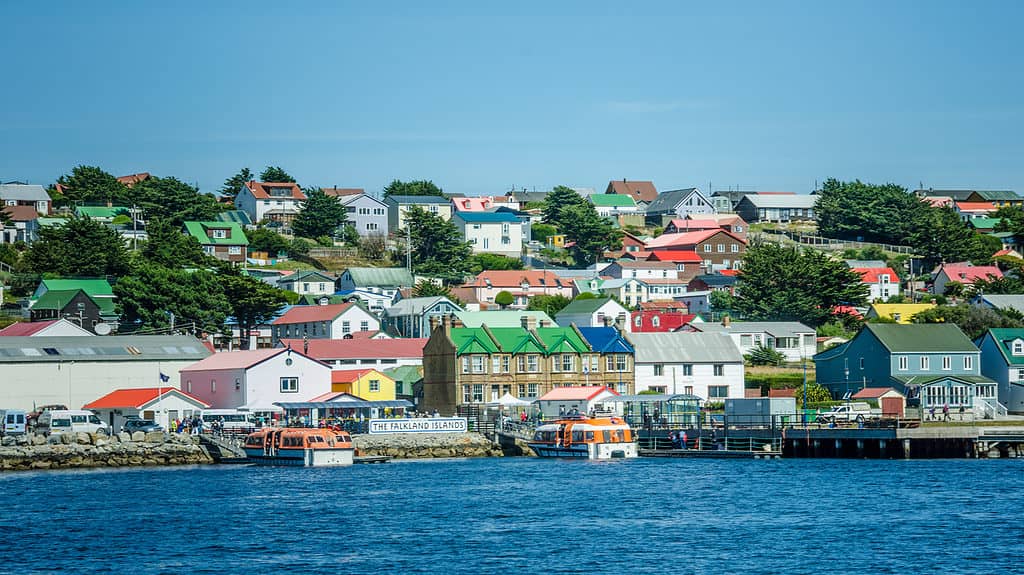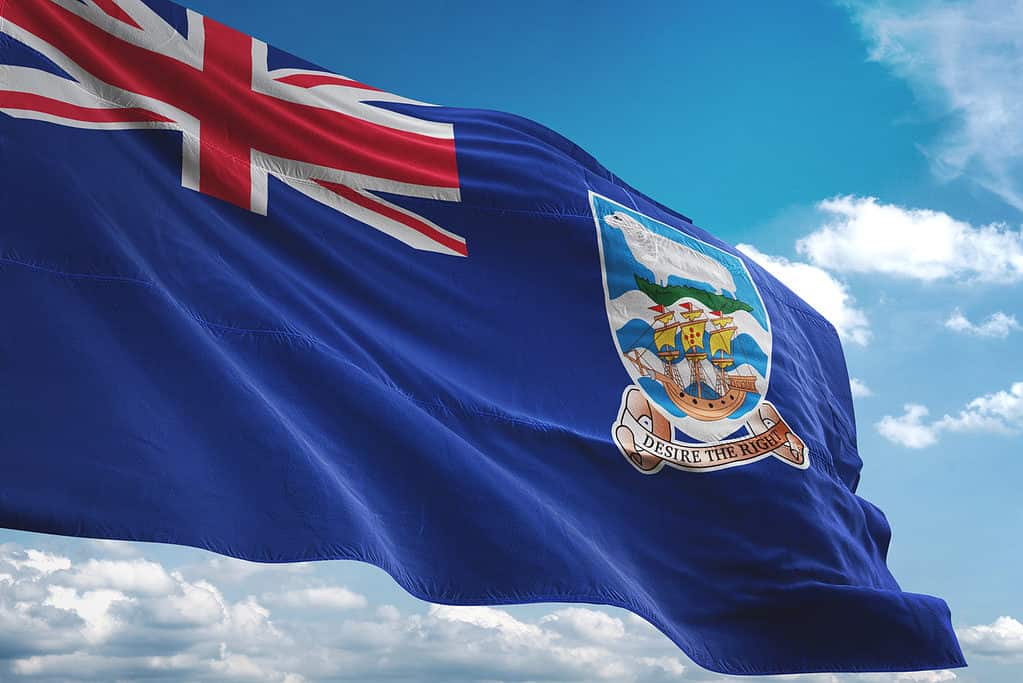A collection of islands in the Atlantic Ocean to the south of the South American coast is known as the Falkland Islands. The area is made up of the two sizable major islands of East and West Falklands, which are encircled by several smaller islands. Also called Malvinas Islands, the region is a self-governing territory of the United Kingdom, also known as a British overseas territory. Being a self-governing territory of the United Kingdom means that the islands have internal self-governance, but the UK handles all their defense and foreign affairs. In most parts of South America, the Falkland islands are mostly called “Islas Malvinas.” The reason for this is that the early French settlers in the area in 1764 had named the islands Malouines, or Malovines, in honor of their home port of Saint-Malo, France.
Despite being small and largely unpopular, the Falkland Islands have a very intriguing history. Keep reading this article to understand part of this history; especially concerning their flag’s history, meaning, and symbolism.
Characteristics of The Falkland Islands
With a population of barely over 3,700 people, the Falkland Islands is one of the most sparsely populated areas in the world. This country is an archipelago with a total area of 12,000 square kilometers (4,700 square miles) comprising East Falkland, West Falkland, and almost 800 other smaller islands. The largest city and settlement in the country is Stanley which is a part of East Falkland. Most of the islands have many mountains and hills except Lafonia, a peninsula on part of East Falkland.
The Falkland Islands population is homogeneous, mostly descended from Scottish and Welsh immigrants who settled in the territory after 1833. For the Falkland-born population, most of them have descents that can be traced back primarily to English or French people or other South Americans and Scandinavians. Despite being of several descents, many of the inhabitants have been completely immersed in the local culture of the Falkland Islands. Also, Christianity is the primary religion practiced, with a large percentage of the population practicing either Anglicanism, Roman Catholicism, or Protestantism. The rest of the population not practicing Christians is split into two groups; the first group consists of those with no religious affiliation, and the second group, which is the minority, practicing religions such as Buddhism and Islam.
The primary language of the inhabitants of the country is English, although some locals also speak Spanish. Because the country’s culture is based largely on that of the United Kingdom and partly on Hispanic South America, there is no clear division of the inhabitants into ethnic groups. Most parts of East and West Falkland, excluding Stanley, are devoted to sheep farming, and the ranches that are used to house these sheep either belong to private individuals or companies based in the UK. The islands are home to hundreds of thousands of sheep, which are primarily reared for their wool. Once the wool is taken off the sheep, it is sold to Britain, serving Falkland’s primary land-based export. Stanley has a harbor that serves as the country’s main port for exports and imports, and sometimes even cruise ships that serve as a means of transport for tourists that are willing to explore the country.
Founding of The Falkland Islands

The primary language of the inhabitants of the Falkland Islands is English.
©iStock.com/LembiBuchanan
The first undisputed sighting of the island was made in 1600 by Dutchman Sebald de Weerdt, but the first recorded landing was not made until almost a century after, in 1690, by English captain John Strong. He also gave the island its name. The first settlement on the island was the East Falkland, and it was not founded until 1764 by the French navigator Louis-Antoine de Bougainville, who also gave the island the name Malovines. Shortly after the establishment of the East Falkland, just a little over a year later, the British settled on the West Falkland. However, they were chased away in 1770 by the Spanish, who had acquired the French settlement a few years earlier. Although the British withdrew from the country, they did not renounce their claim over it.
Following World War II, the United Nations became responsible for determining the Falkland Islands’ sovereignty. The UN General Assembly passed a resolution in 1965 asking Argentina and Britain to consult with one another about finding a peaceful end to the conflict. While the resolution was ongoing, Argentina’s military government invaded the country and caused the Falkland Islands war, which lasted a little over 10 weeks before they surrendered to British troops that had also found their way into the country. Even after the war, the issue of the country’s sovereignty was still present and continued even until the 21st century. It was not until 2013 that the inhabitants of the Falkland Islands voted to remain a British overseas territory.
History of the Flag of The Falkland Islands

The Falkland Islands’ current flag was adopted on January 25, 1999.
©iStock.com/sezer ozger
The Falkland Islands were occupied by a number of countries before becoming a British overseas colony, and these countries flew their flags over the island. The island adopted a flag in 1876, which featured the island’s seal and a Union Jack in the upper left corner. The flag was changed in 1925 to display a new insignia that showed the sea lion on the left and Desire, the ship that discovered the Falkland Islands, on the right. The motto “DESIRE THE RIGHT” also appeared above the shield.
The Argentine flag, which is blue, white, and blue with a yellow sun, was adopted during the Falklands War in 1982 for a short while in the place of the British Blue Ensign. However, after the Argentine troops surrendered to the British military, the flag was changed again. Despite being flown for the first time on September 22, 1948, the Falkland Islands’ present flag was adopted on January 25, 1999. The primary difference between both flags is that, on the first one, the coat of arms was overlaid on a white disc, which is not present on the one flown now.
Meaning and Symbolism of the Flag of The Falkland Islands

The Union Jack on the Falkland Islands’ flag signifies the relationship the Falkland Islands have with the United Kingdom.
©iStock.com/Oleksii Liskonih
The flag of the Falkland Islands is a blue field with the Union Jack Flag in the top left corner and the Falkland Islands coat-of-arms close to the fly end. The Union Jack on the flag signifies the relationship the Falkland Islands have with the United Kingdom. In other words, because the country is a British overseas territory, its flag has an element of the British flag. The coat of arms of the country itself shows a ram on land, signifying the country’s sheep-raising. Under the ram, there is a ship that signifies the first ship, the Desire, whose crew discovered the island for the first time. The coat of arms also has the country’s motto- “Desire the Right.”
Up Next:
The Flag of Argentina: History, Meaning, and Symbolism
The British Flag: History, Meaning, and Symbolism
Discover 15 of the Smallest Islands in the World (One has a Tiny House on It!)
The photo featured at the top of this post is © iStock.com/DreamCursor
Thank you for reading! Have some feedback for us? Contact the AZ Animals editorial team.






